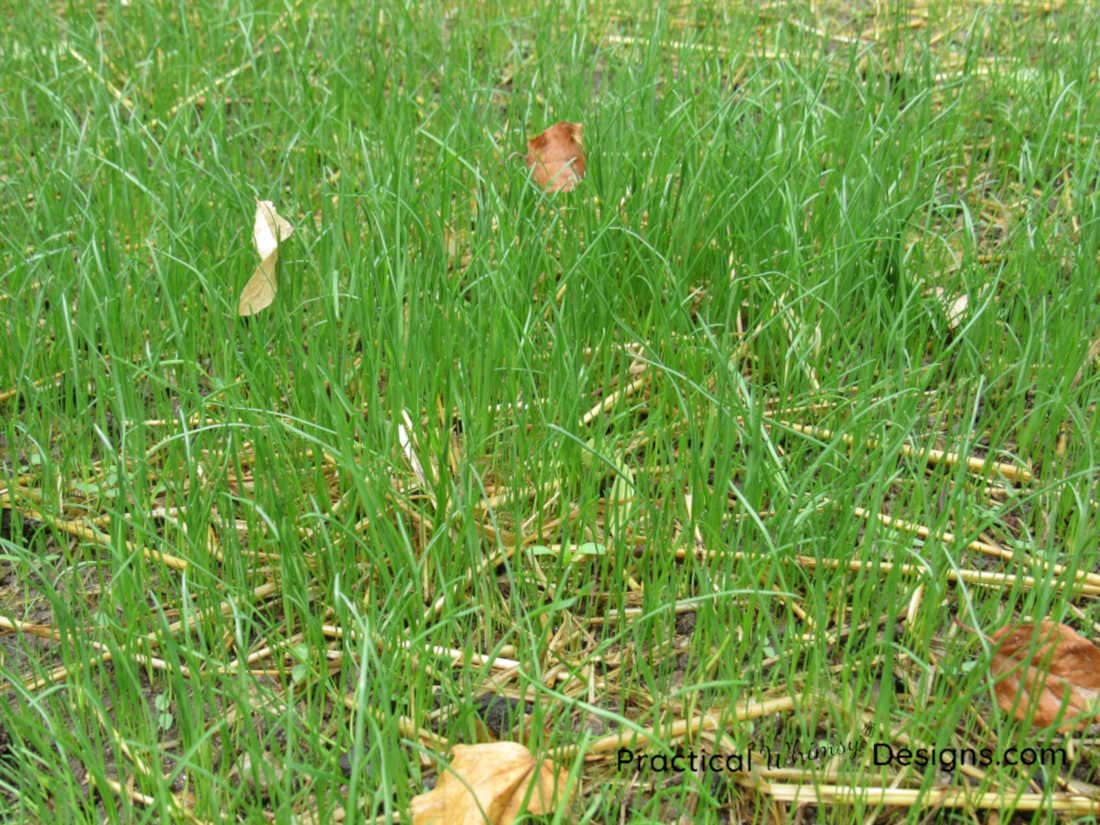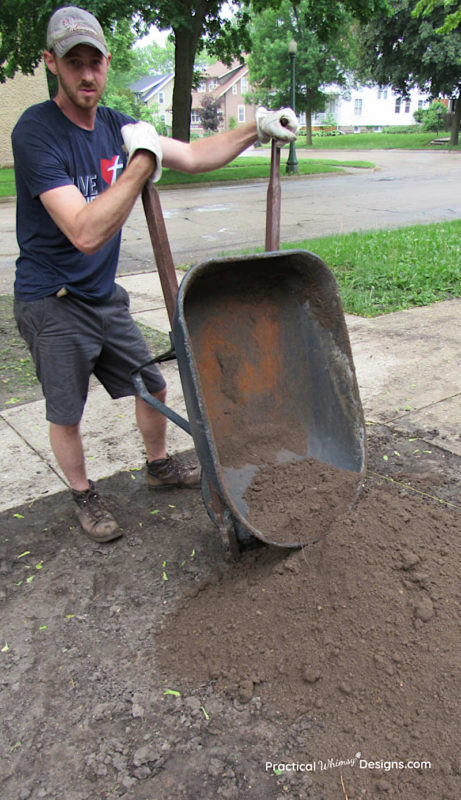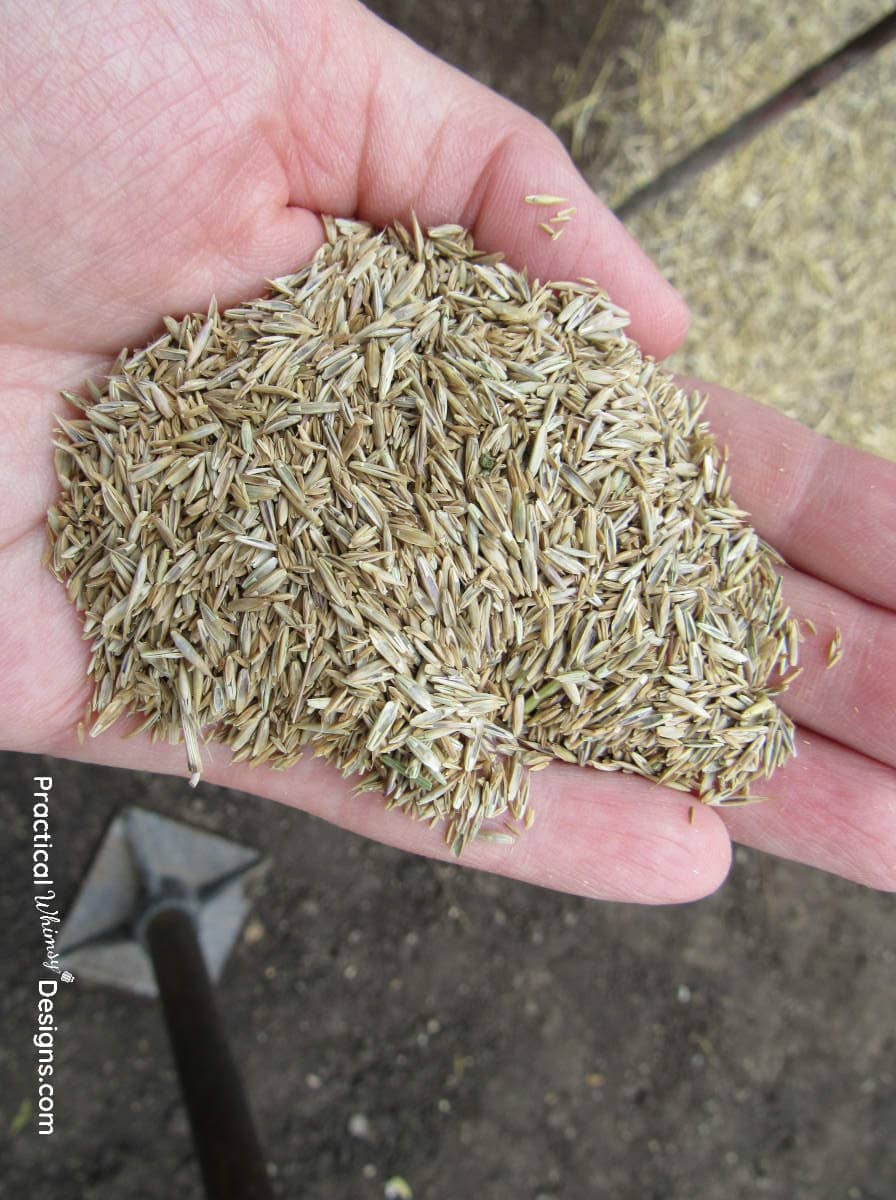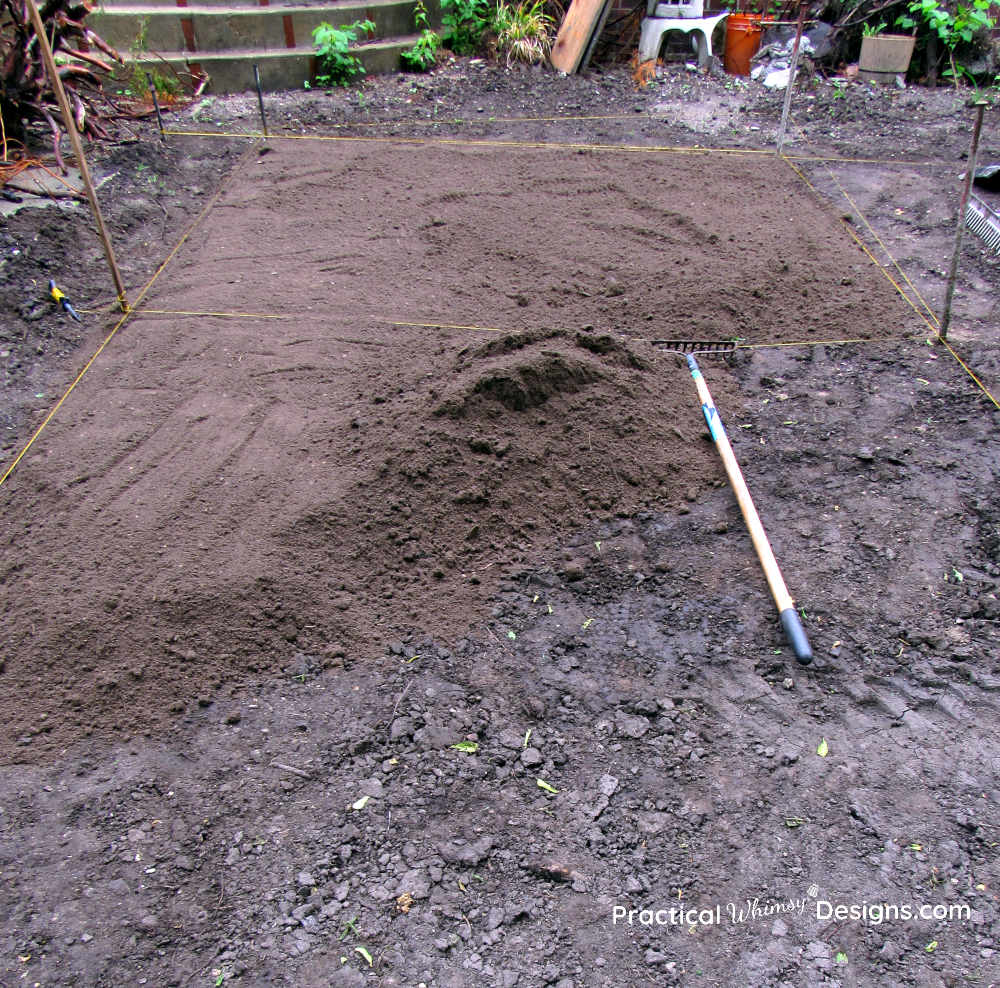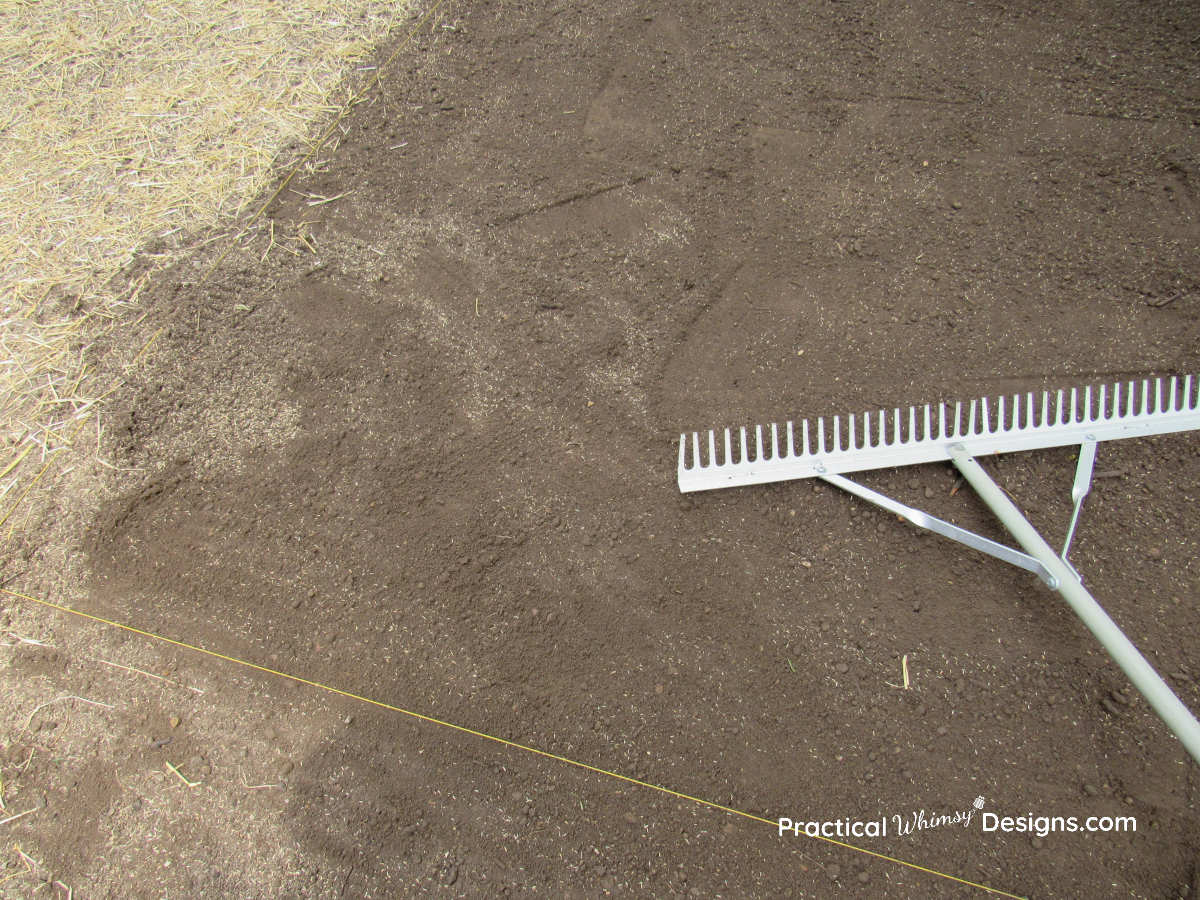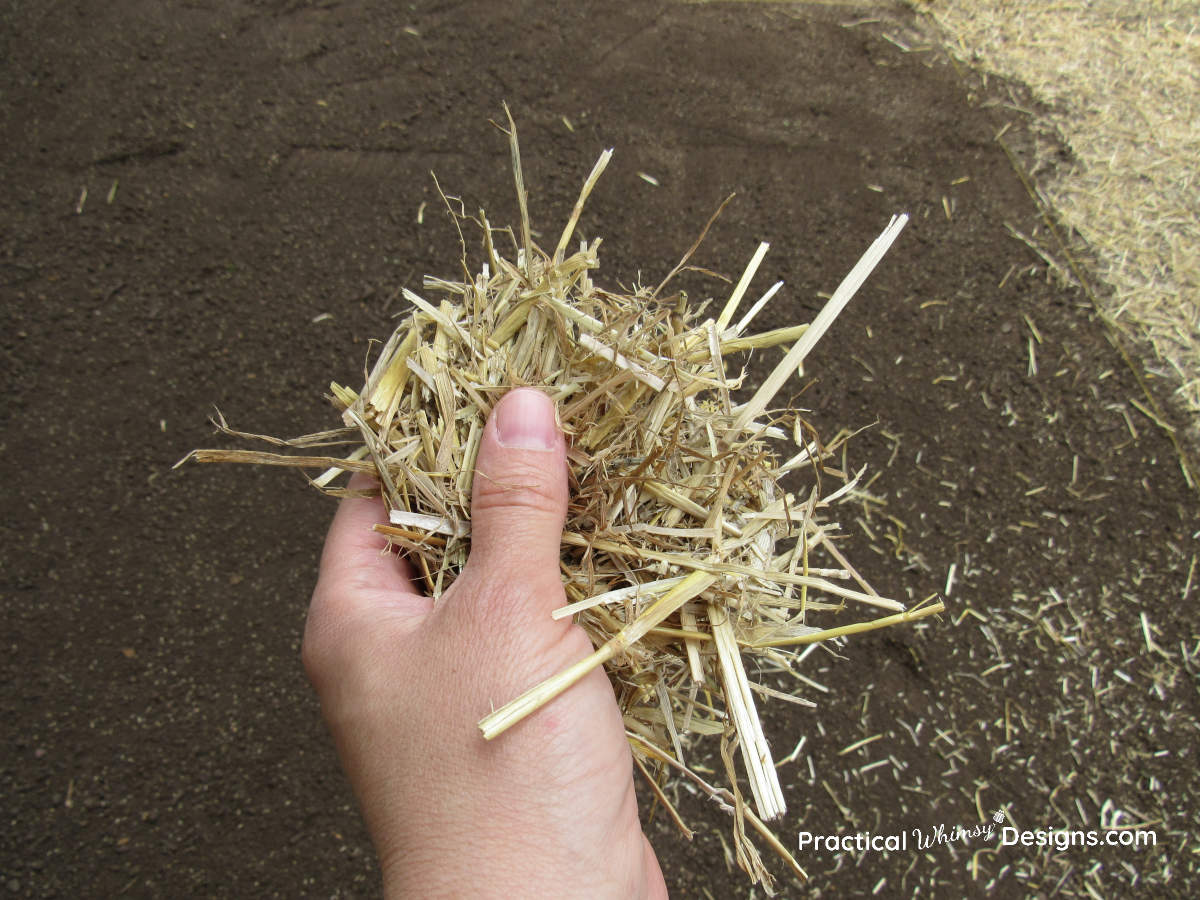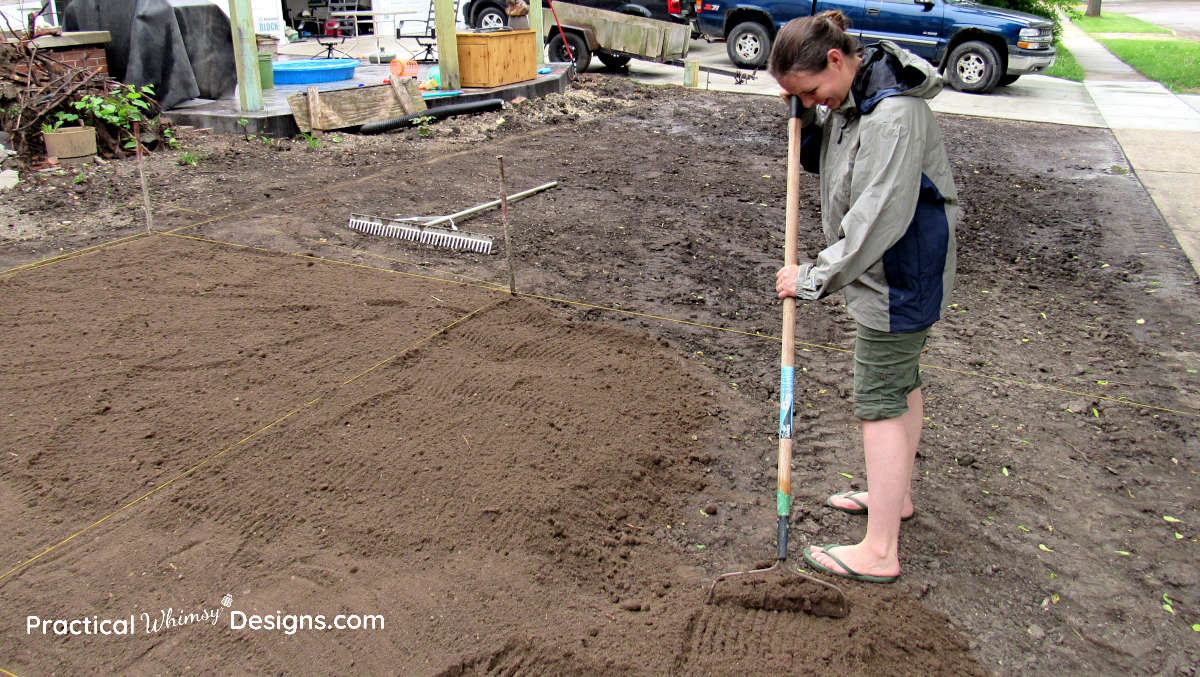Grass is one of the main things that can add or detract from the curb appeal of your house. Here are 6 steps to help you plant grass seed in the Midwest.
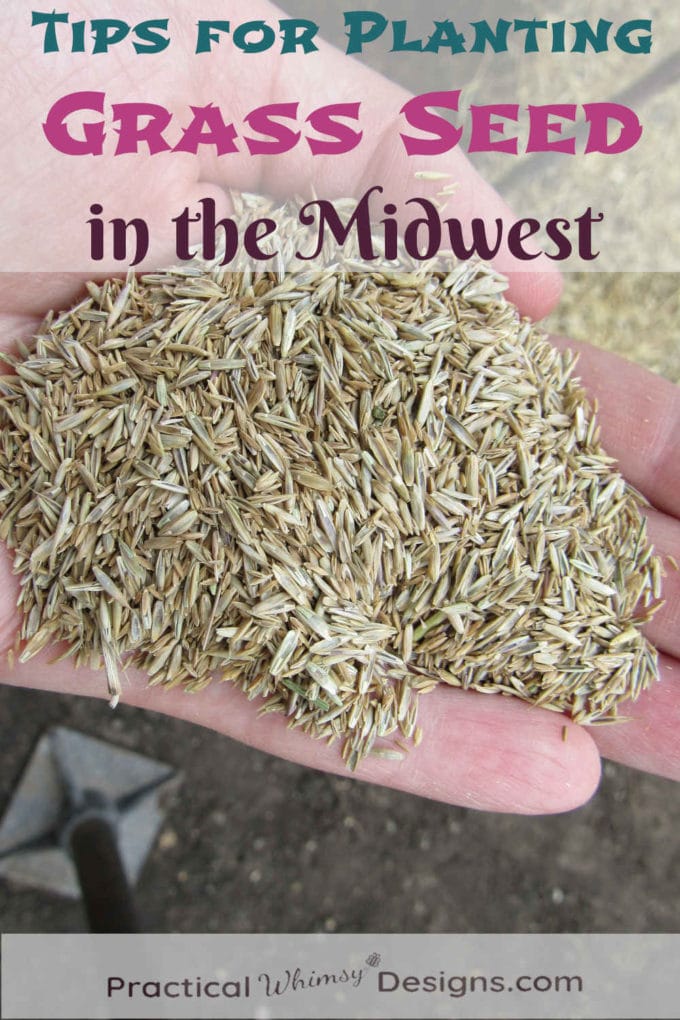
Have you ever found yourself with a whole lot of dirt in your yard and not a lot of grass? There are so many things that work against a beautiful lawn.
Weeds, dogs, kids, men with bobcat excavators…..
Yep. We are victims of all four of the above and because of this, we needed to do a whole lot of grass seed planting. If you want to read about our bobcat excavation project you can jump over to here. Unfortunately, after our landscaping, we had a lot of grass to plant and we had given back the bobcat we borrowed. This meant a lot of wheelbarrows of work. Though we had never attempted to re-seed our lawn on this scale, we did our research and began the process.
It doesn’t matter if you need to patch in only a couple of areas or you have a whole yard of grass to plant, we found you can still use these steps to get the job done.
6 Steps to plant grass seed in the Midwest
Step 1: Determine what grass seed you need
Make sure you are buying high quality grass seed. It is recommended that you buy a blend when re-seeding. A blend allows greater resistance to disease and more of a chance that your seedlings will survive drought and weather fluctuations. Kentucky Bluegrass is drought resistant but ryegrass is known to have disease issues. Look on the label for high quantities of Bluegrass and fescue and minimal or no ryegrass.
Timing is Everything!
The ideal planting time in the Midwest is mid-August to mid-September. At this time, the soil doesn’t dry out as quickly and weed seeds are at a minimum. Also, it is the ideal temperature for the grass seeds to germinate.
If you can’t plant in Fall, then April or May is the second best time to plant. It is still cool and more moist than summer. However, you may have to deal with more weeds growing in your newly planted grass.
Step 2: Prepare the Soil
Your grass seed needs soft earth to grow in. Make sure to loosen the top 1-2″ of soil with a rake. If you have low lying areas that need to be filled, add extra top soil. In our case, we had removed the grass and top soil on a good portion of our lawn to get rid of the roots, weeds, and rocks. Because of this, we needed A LOT of top soil.
Tip: When working with a larger space, you can level out your new yard by using stakes and rope to segment off your yard in sections. Place the line at the level you want your soil to sit at and bring in dirt to match the line height. (Remember that your dirt will settle, so bring the lines up slightly from the level you want it to go)
Step 3: Fertilize
After breaking up your soil and adding any necessary topsoil, you need to mix in fertilizer to give your grass the nutrients it needs to grow. Use starter fertilizer if available. Starter fertilizer is high in phosphorus. If you do not have access to starter fertilizer, a 10-10-10 or 12-12-12 (nitrogen-phosphorus-potassium) mix will work.
Step 4: Sprinkle Seed and Straw
After your soil is loosened and topsoil is added, sprinkle in the grass seed. You can be pretty generous with the amount. Carefully rake the loose soil with a landscape rake to mix the grass seed in to the soil and gently tamp it in with your foot. If you don’t work the seed into the soil, it will either wash away or become food for animals.
Sprinkle straw onto the grass seed. Don’t over do it. The ideal is about 50% straw to 50% dirt. The straw is used to retain the moisture in the seeds, but you still need them to receive enough sun to germinate.
DO NOT USE HAY!
Hay has too many weed seeds in it and the last thing you want to do is re-seed your yard with a bunch of weeds.
Step 5: Water, water, water!
Your seeds need to be gently watered 1-2 times a day until the grass sprouts and grows to about an inch. The ideal time to water is early in the morning when the grass still has some dew on it. Don’t over water, though. You need your soil to be wet, but you don’t want your seeds to drown in a puddle. Check your soil before watering to see how moist it is.
Once your grass grows to about an inch, you can cut back to watering every other day or so. Keep the top inch or two of soil wet.
After about a month, when your grass is 2 inches high, you can mow it for the first time! Raise the blade on your mower and don’t cut it too short. At this time, the goal is to encourage your grass to grow deep, healthy roots. Your grass needs about 1-1.5 inches of water a week. Water your soil no more than 1-2 times a week so that the roots grow deeper, seeking the moisture in the soil.
Step 6: Fertilize Again!
About 3-4 weeks after planting your seed, it is time to fertilize again. A lot of the first application of fertilizer runs off because of the constant watering of your new seed. Your grass will appreciate a second application to give its new roots added strength.
To Re-seed an Existing Lawn
The method for re-seeding your lawn is similar. Break up the soil in your lawn with a landscape rake or aerator. (Just don’t pull out the grass you already have) Rake in fertilizer and then grass seed and tamp it into the soil. You shouldn’t need to mulch it with straw if you are adding it to existing grass. However, if there are any bare patches, add some straw mulch. Then water, water, water.
Not Everything Works According to Plan
Of course, nature has a mind of its own. Even the best research can’t control the weather.
It seemed that every time we planted our seed, it down poured buckets of water and washed all of our seed out! We will have to mix in a little extra seed next spring to fill in our lawn.
The nice thing about rain is you get to wear a stylish get up like this when you plant your seed:
Or better, yet. Pray it doesn’t rain!!!
What kind of grass patch jobs have you found yourself tackling? Have you picked up any fantastic grass growing tips? What disasters have you encountered?
SOURCES:
- Wisconsin Public Radio https://www.wpr.org/early-fall-prime-time-lawn-care
- University of Illinois https://extension.illinois.edu/lawntalk/index.cfm



